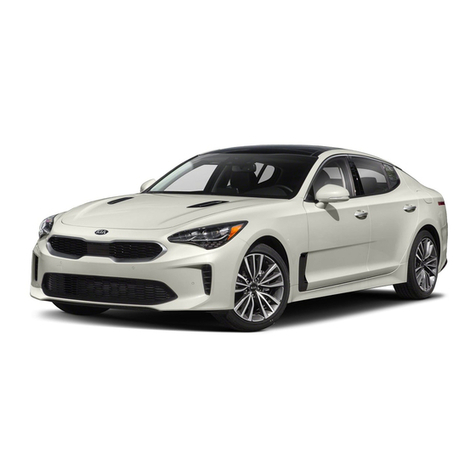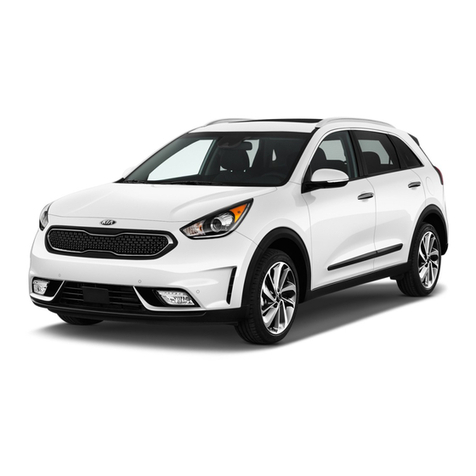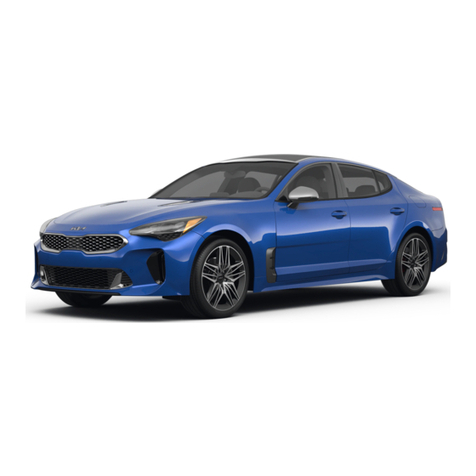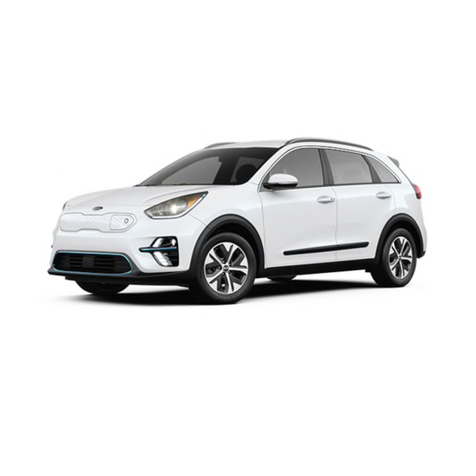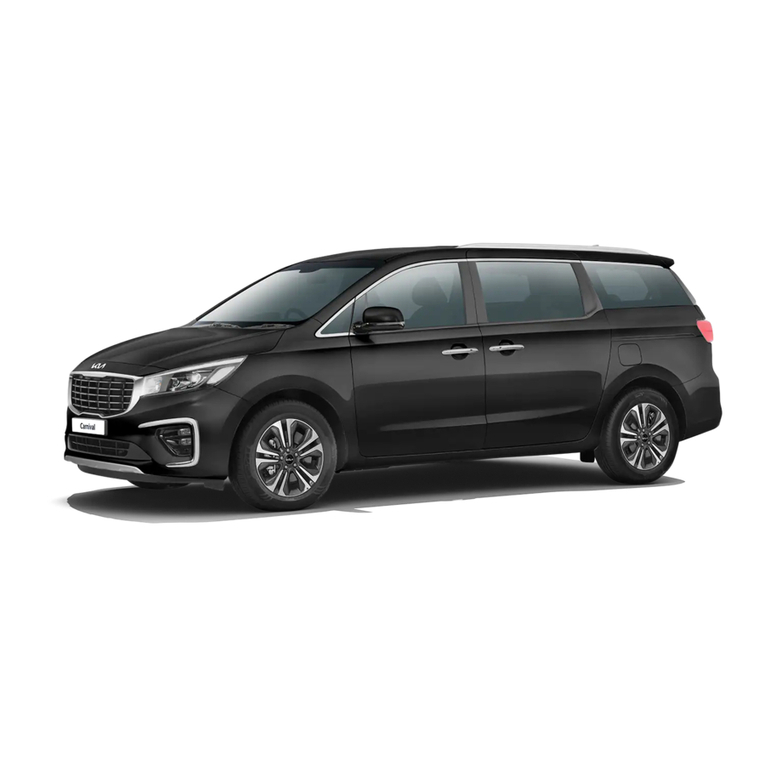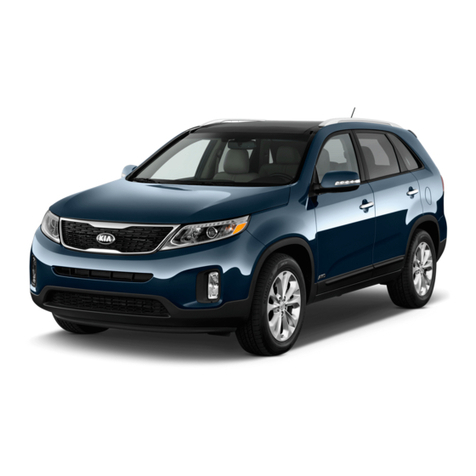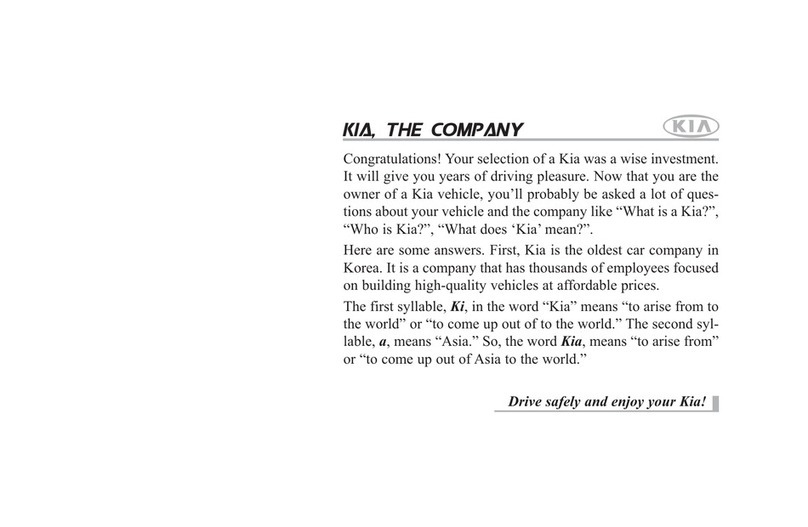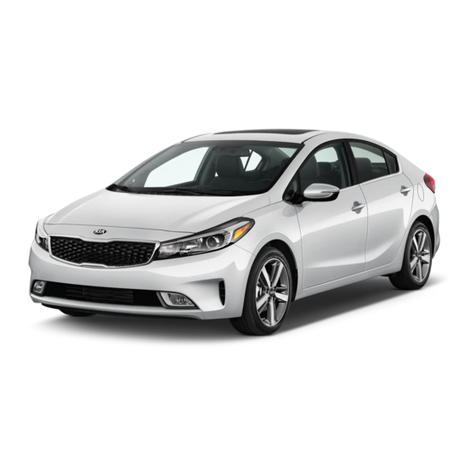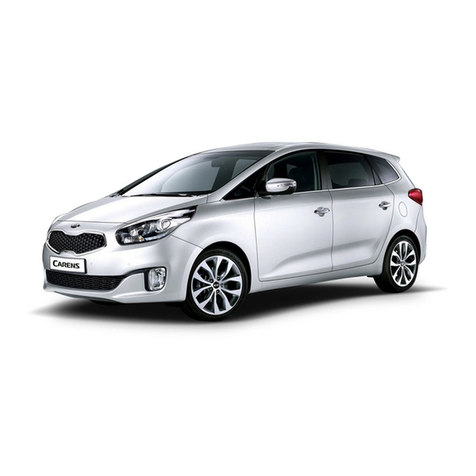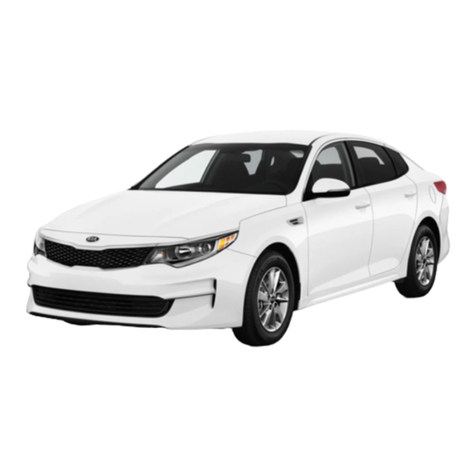
VIDEOS & QR CODES.....Inside Front Cover
INSTRUMENT CLUSTER
Instrument Cluster Overview ................ 03
Indicators & Warning Lights ................. 04
Electric Vehicle (EV) Indicators ............... 05
Energy Consumption....................... 05
Charge Warning Messages on LCD Display...... 06
Tire Pressure Monitoring System (TPMS) ....... 08
VEHICLE SETTINGS
LCD Instrument Cluster Modes ............... 09
Trip Modes / Trip Computer.................. 09
User Settings – Instrument Cluster .............10
Vehicle Settings* – Audio Head Unit ............11
Service Interval Mode .......................11
ELECTRIC VEHICLE (EV) FEATURES
Drive Modes ..............................12
Charging Connector Auto/Lock Mode ...........13
Scheduled Charging* .......................13
Charging Your Electric Vehicle.................14
EV Mode - UVO link with Navigation* ...........16
Regenerative Braking with Paddle Shifters .......18
ADVANCED DRIVER ASSISTANCE
SYSTEMS (ADAS)
Blind-Spot Collision-Avoidance Warning (BCW)*...19
Rear Cross-Traffic Collision-Avoidance
Assist (RCCA)*...........................19
Lane Keeping Assist (LKA)* ................. 20
Lane Following Assist (LFA)*................. 22
Forward Collision-Avoidance Assist (FCA) ...... 23
Highway Driving Assist (HDA)* ............... 24
Leading Vehicle Departure Alert (LVDA) ........ 25
Driver Attention Warning (DAW)*.............. 26
DRIVER’S PANEL
Instrument Cluster Control .................. 27
Electronic Stability Control (ESC) ............. 27
Hill-Start Assist Control (HAC) ............... 27
Power Button ............................ 28
Power Windows, Window Lock & Central Door Lock 29
Automatic Door Lock. . . . . . . . . . . . . . . . . . . . . . . 29
Power/Heated Outside Mirrors*. . . . . . . . . . . . . . . 29
Power Folding Outside Mirrors* .............. 29
STEERING WHEEL CONTROLS
Smart Cruise Control (SCC) with Stop & Go*..... 30
Navigation-based Smart Cruise Control - Curve
(NSCC-C)* ............................. 31
Cruise Control ............................ 32
Tilt/Telescoping Steering Wheel .............. 32
Headlights & High Beams ................... 33
Turn Signals & Fog Lights* .................. 33
Windshield/Rear Wipers & Washers ........... 34
AUDIO SYSTEM
Audio Controls ........................... 35
Bluetooth®Wireless Technology .............. 36
Android Auto™/ Apple CarPlay®Setup ......... 38
UVO link Activation* ....................... 39
UVO Assistance* .......................... 39
Kia Access with UVO link App Download........ 40
Kia Access with UVO link App Features Guide.... 40
Standard Audio System - Value* ...............41
UVO link with Navigation* ................... 42
CENTER PANEL
Digital Clock ............................. 43
USB Charger Ports*. . . . . . . . . . . . . . . . . . . . . . . . 43
Multimedia USB Ports & Power Outlets* ........ 43
Wireless Smartphone Charging System*........ 44
CENTER PANEL (CONTINUED)
Automatic Climate Control .................. 45
Rotary Dial Shifter Knob .................... 46
Heated Steering Wheel Button*............... 46
Electronic Parking Brake (EPB) ............... 47
Auto Hold ............................... 47
Seat Warmers / Ventilated Seats* ............. 48
SEATING
Front Seat Headrest Adjustment .............. 49
Rear Occupant Alert (ROA) with Door Monitoring . 49
Power Adjustable Driver’s Seat* .............. 50
6-Way Manual Adjustable Passenger’s Seat* .... 50
Folding Rear Seats ........................ 51
OTHER KEY FEATURES
Hood Release Lever and Latch ............... 52
Sunvisor ................................ 52
Smart Key ............................... 53
Double-Turn Lock/Unlock All................. 53
Map/Room Lamps. . . . . . . . . . . . . . . . . . . . . . . . . 54
Sunroof Operation* ........................ 54
Reverse Parking Distance Warning (PDW)*...... 55
Rear View Monitor (RVM) ................... 55
Liftgate Release Button* .................... 56
Child-Protector Rear Door Lock .............. 56
Tire Mobility Kit........................... 56
SAFETY FEATURES
Occupant Detection System (ODS) /
Passenger Airbag Off Indicator ............. 57
Seat Belts ............................... 57
MAINTENANCE CHART ......... Back Cover
LEGAL DISCLAIMERS ...... Inside Back Cover
*IF EQUIPPED
2NIRO EV FEATURES & FUNCTIONS GUIDE
TABLE OF CONTENTS
